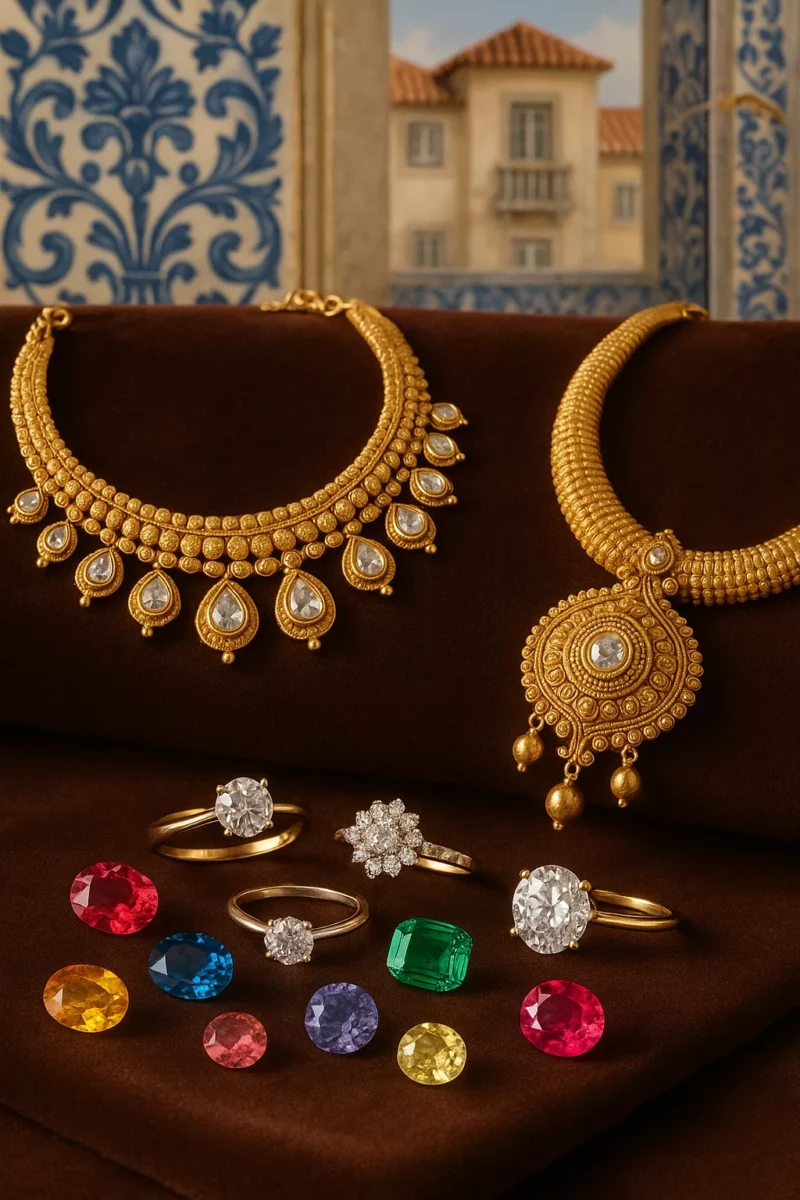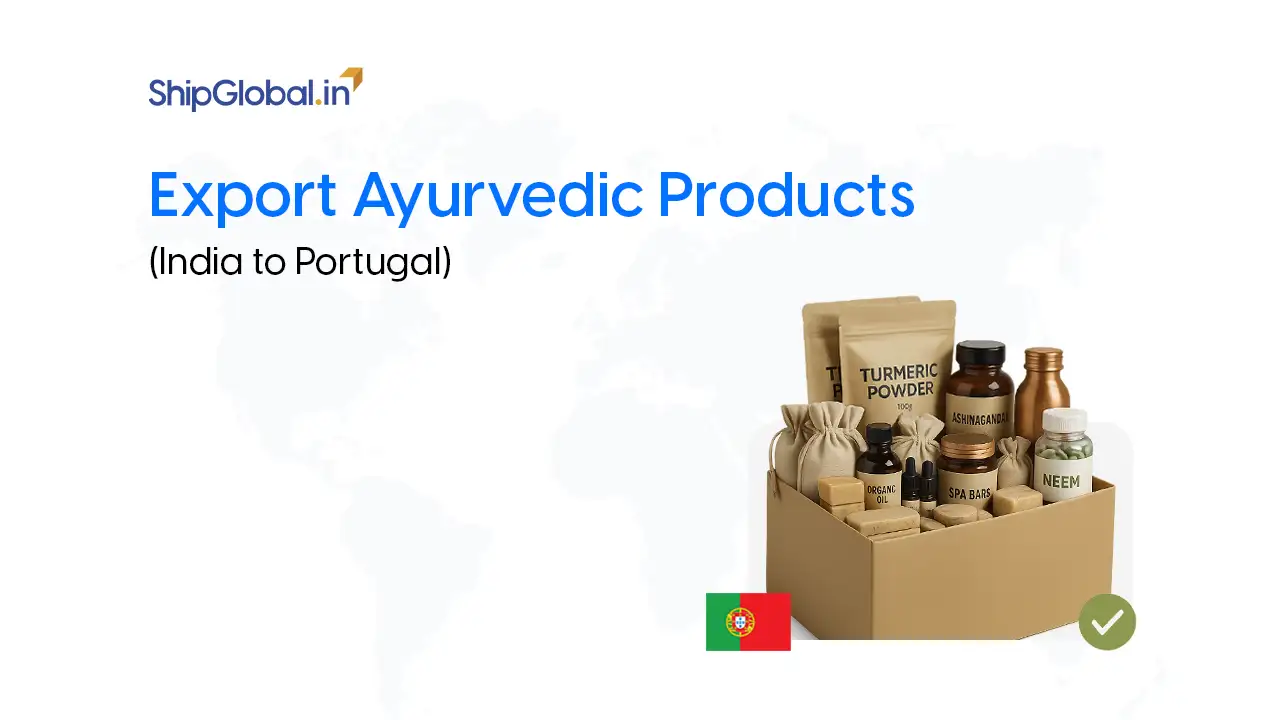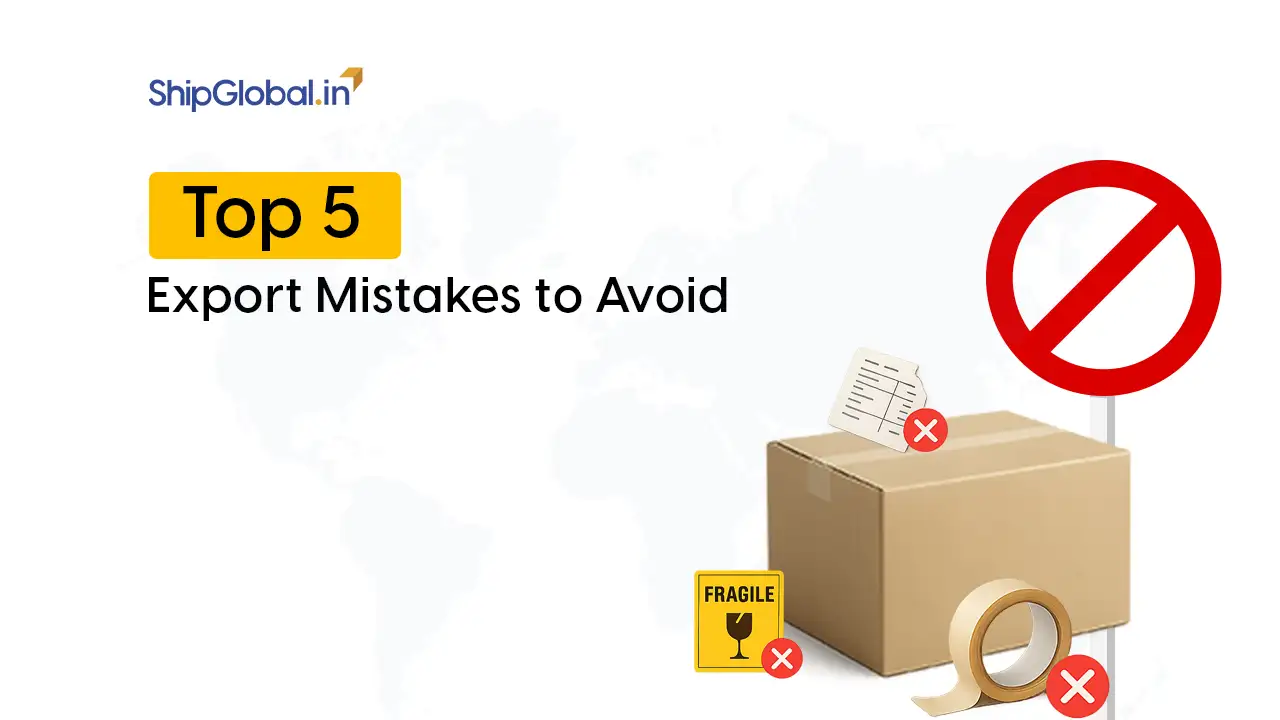Olá, Joalheiros!
(Hello Jewellers!)
The world loves Indian craftsmanship, and Portugal, with its elegant taste and appreciation for fine artistry, is no exception. Whether you’re a manufacturer in Jaipur, a diamond dealer in Surat, or a goldsmith in Coimbatore, the opportunity to export gems and jewellery India to Portugal is sparkling with potential.
But while the European market is lucrative, it’s also regulated which means before your jewellery reaches boutiques in Lisbon or Porto, you’ll need to navigate EU jewellery import requirements, REACH compliance, hallmarking laws, customs duties, and logistics.
This comprehensive guide walks you step-by-step through every stage of the export process from compliance and documentation to logistics and customs clearance, helping you build a trusted jewellery export business between India and Portugal.

Why Export Gems and Jewellery India to Portugal?
India is the world’s largest diamond cutting and polishing hub, and a leading exporter of gold, silver, and handmade jewellery. Portugal, meanwhile, is part of the European Union (EU), where consumer demand for ethically sourced and beautifully designed jewellery is on the rise.
Portuguese consumers value authenticity, sustainability, and craftsmanship qualities deeply embedded in Indian artistry. By meeting EU jewellery import requirements, your brand can reach new customers and expand across Europe with Portugal as your entry point.
Additionally, Portugal’s location on the Atlantic coast and its access to major ports like Lisbon and Porto make it an ideal hub for re-exporting Indian jewellery to Spain, France, Germany, and beyond.
Step 1: Meeting EU Jewellery Import Requirements and REACH Compliance
When you export gems and jewellery from India to Portugal, your products must comply with EU chemical safety laws. These are set under the REACH regulation, which limits harmful substances like:
- Nickel release (to prevent skin allergies)
- Lead content (must be below 0.05%)
- Cadmium limits (below 0.01%)
These thresholds apply to all jewellery imported into the EU, including silver, gold, costume jewellery, and plated pieces. Testing and certification from accredited labs in India (or the EU) help prove compliance before shipping.

Include a REACH Compliance Certificate and Material Safety Data Sheet (MSDS) in your export documentation to avoid customs delays in Portugal.
Step 2: Know Your Responsibilities Under EU GPSR 2023/988
Since December 2024, the EU General Product Safety Regulation (EU GPSR 2023/988) defines clear responsibilities for importers and economic operators in the EU jewellery trade.
If you’re exporting from India to Portugal, your Portuguese importer (or your EU-based representative) becomes the economic operator, responsible for ensuring the products are:
- Safe and compliant (REACH-tested, properly labelled)
- Traceable (batch codes, supplier info)
- Documented with technical files and conformity declarations
It’s crucial to establish a written compliance agreement with your importer outlining who maintains documentation, who ensures product traceability, and how any non-conformities will be handled. This protects both parties legally.
Step 3: Portuguese Hallmarking and INCM Contrastaria
Portugal has strict hallmarking laws governed by INCM Contrastaria (the official Portuguese Assay Office). Any jewellery imported into Portugal must bear an approved assay office mark, showing its metal purity.
The Common Control Mark (Hallmarking Convention)
Good news: India and Portugal both recognize the Common Control Mark (CCM) under the Hallmarking Convention. If your jewellery is already hallmarked under this system, it’s accepted in Portugal without re-testing, saving you time and money.
But if not, your Portuguese importer must send samples to the Contrastaria office in Lisbon or Porto for hallmarking before retail.
Consider joining India’s BIS Hallmarking Scheme aligned with international hallmarking standards, which helps streamline cross-border recognition and reduces turnaround times in the EU.
Step 4: Kimberley Process Certificate for Rough Diamonds
If your gems and jewellery export from India to Portugal includes rough diamonds, you’ll need a Kimberley Process certificate. This global certification ensures that diamonds are conflict-free and traceable.
Portuguese customs will not clear any rough diamond shipment without valid Kimberley Process documentation, so always include it with your export papers.
Ensure your certificate numbers are mentioned clearly on both your commercial invoice and packing list for faster customs clearance.
Step 5: Russian Diamond Ban and Traceability Requirements
In 2024, the EU and G7 introduced restrictions on Russian diamonds. This means that if you’re exporting gems or finished jewellery containing diamonds, you must provide full traceability documentation proving that no Russian-origin stones are included.
For high-value exports of gems and jewellery from India to Portugal, detailed supplier declarations and chain-of-custody records are crucial for customs clearance.
For high-value shipments, using blockchain-based traceability tools like GIA’s Source Assurance or Tracr™ can significantly enhance your credibility with EU buyers and customs authorities.
Step 6: Customs, TARIC Code, and VAT for Jewellery Imports to Portugal
When you export jewellery from India to Portugal, you’ll need to declare your products under the correct TARIC code (EU customs classification). The most common ones include:
- 7113 – Jewellery of precious metal
- 7116 – Articles of imitation jewellery
Customs Duty and VAT (CIF Basis)
- Customs Duty: Usually around 2.5–4% for most jewellery types.
- VAT in Portugal: Standard rate is 23%, applied on the CIF value (Cost + Insurance + Freight).
Ensure your invoices clearly show these values for smooth customs clearance in Lisbon or Porto.
To simplify the process, hire a Portuguese customs broker familiar with jewellery imports they can pre-lodge customs declarations and ensure smooth clearance through Lisbon or Porto customs offices.
Step 7: Packaging, Insurance and Logistics for Secure Jewellery Shipping
Shipping high-value gems and jewellery internationally requires care. When exporting jewellery from India to Portugal, consider these key logistics tips:
Secure Packaging
Use tamper-evident packaging and inner boxes with discreet labelling. Avoid words like “gold” or “diamond” on the outer box to reduce risk.
High Value Parcel Insurance
Always get high-value parcel insurance that covers the full CIF value from India to Portugal. Many insurers offer specialized jewellery transit policies for exporters.
Trusted Logistics Partners
Use reliable international couriers experienced in secure jewellery shipments (like Malca-Amit, Brinks, or Ferrari Group). They handle door-to-door customs clearance for jewellery in both Lisbon and Porto.
For smaller consignments, you may use specialized courier services that offer “secured value shipments,” but always verify their customs clearance capability in Portugal before dispatch.
Step 8: Gems and Jewellery Customs Clearance in Lisbon and Porto
At Portuguese entry ports (Lisbon or Porto airports), customs authorities will check:
- REACH and GPSR compliance certificates
- INCM hallmarking / CCM proof
- Kimberley Process certificate (if applicable)
- Commercial invoice, packing list, and airway bill
- TARIC code and VAT payment proof
With complete documentation, customs clearance for gems and jewellery in Portugal is typically smooth and efficient.
Once approved, jewellery can be moved to bonded warehouses or directly delivered to your importer’s premises.
Portuguese customs are generally efficient, and clearance for compliant shipments often completes within 48–72 hours.
Final Thoughts: Making Your Gems and Jewellery India to Portugal Export Journey Shine
Exporting gems and jewellery from India to Portugal isn’t just about design and quality – it’s about compliance, trust, and attention to detail.
By ensuring REACH compliance, adhering to EU GPSR 2023/988 responsibilities, following Portuguese hallmarking (INCM Contrastaria) rules, and securing insurance and logistics, your brand can sparkle in the European market.
With careful preparation and attention to detail, your creations can travel safely from the workshops of India to the elegant showcases of Portugal sparkling as symbols of artistry, authenticity, and excellence.
FAQs
Yes, REACH is mandatory for all jewellery entering the EU. Include the REACH Certificate and MSDS with your shipment.
Yes. Use the Common Control Mark (CCM) or get jewellery hallmarked by INCM Contrastaria in Portugal.
Key documents include invoice, packing list, airway bill, REACH certificate, Kimberley Process certificate (if needed), hallmark proof, and TARIC/VAT details.
Customs duty is around 2.5–4%, and VAT is 23% on the CIF value.
Provide traceability documents and supplier declarations. Tools like GIA Source Assurance or Tracr™ help validate origin.







